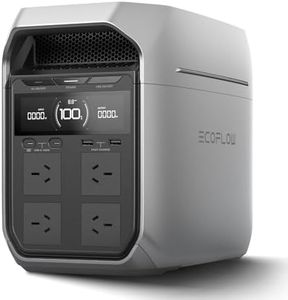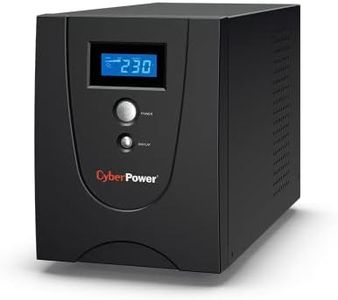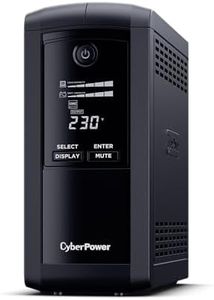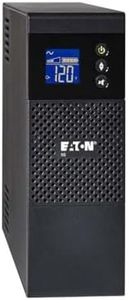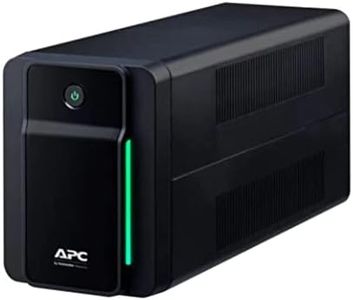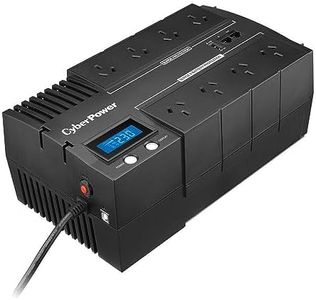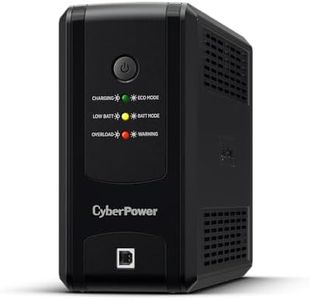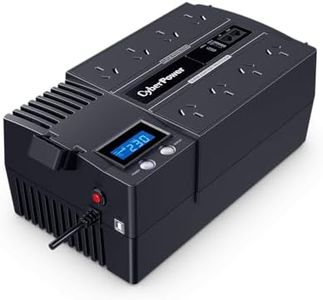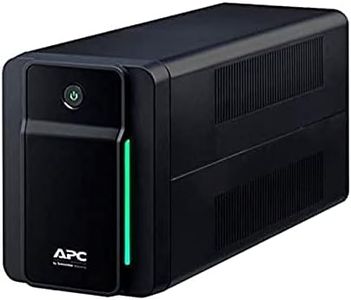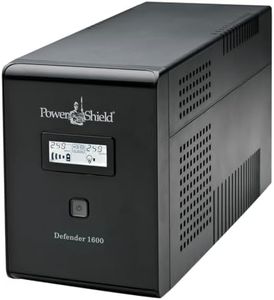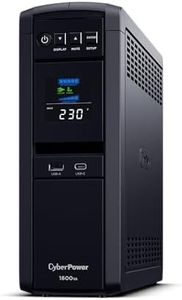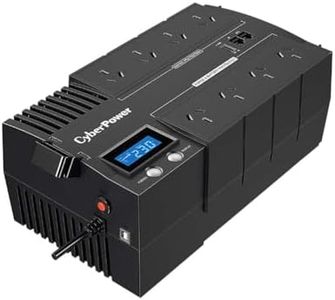We Use CookiesWe use cookies to enhance the security, performance,
functionality and for analytical and promotional activities. By continuing to browse this site you
are agreeing to our privacy policy
10 Best Ups Backups
From leading brands and best sellers available on the web.By clicking on a link to a third party's website, log data is shared with that third party.
Buying Guide for the Best Ups Backups
When choosing an uninterruptible power supply (UPS), also known as a backup power solution, your main goal is to safeguard your devices against power interruptions and voltage fluctuations. The perfect UPS depends on what you want to protect, how long you need power during an outage, and the features that make operation safer and more convenient. Understanding a few core features will help you feel confident in your choice, ensuring you get enough power backup without overpaying for unnecessary extras.Capacity (VA/Wattage)Capacity in a UPS is measured in volt-amps (VA) and watts (W). It indicates how much electrical load the unit can support at once; in other words, how many and which types of devices it can keep running during a power outage. Lower-capacity UPS models are suitable for small devices like Wi-Fi routers or a single desktop computer, while mid-range options handle multiple computers, monitors, or networking equipment. High-capacity UPS systems can manage whole home offices or servers. To choose, add up the wattages of everything you want protected and pick a UPS with a capacity 20-30% higher to give yourself a safety margin.
Battery Run TimeBattery run time refers to how long the UPS can keep your devices running after the power goes out. Short run times, such as 5–10 minutes, are ideal for safely shutting down equipment; longer run times (15–30 minutes or more) let you keep critical devices online longer. Consider whether you just need time to save work and power down, or if you need extended operation, for example during frequent or lengthy outages.
Number and Type of OutletsThis spec describes both how many devices you can plug in and whether the outlets offer battery backup or just surge protection. Some outlets might only protect against surges but won't provide backup power. Think about both the number and kind of devices you’re plugging in—computers, monitors, routers, or other electronics—and make sure the UPS has enough battery-backed outlets for the most critical equipment.
Form Factor and SizeUPS units come in various shapes and sizes, from compact desktop styles to larger tower or rack-mounted versions. Smaller models fit in tight spaces and under desks, great for individual computers, while bigger units are suited for server rooms, home entertainment setups, or network racks. Match the form factor to your available space and the intended use; don’t choose something too bulky for your room or too small for your needs.
Type of UPS (Standby, Line-Interactive, Online)There are several types of UPS technology. Standby UPS models are basic and switch to battery only when power fails—best for simple setups or non-critical electronics. Line-interactive units offer better protection, managing minor power fluctuations as well as outages, making them a solid choice for computers or home offices. Online (double-conversion) UPSs provide the highest level of protection by constantly powering devices from their battery, with mains power continually recharging the battery. Online types are ideal if you have highly sensitive or critical equipment.
Features and MonitoringModern UPS units can offer features like LCD displays for monitoring status, USB or network ports for managing automatic shutdown, audible alarms, hot-swappable batteries, and software integration. Consider which features make operation easier or safer for you—like a display for checking battery status, or software to auto-save files and turn off a computer safely during an outage. These extras aren’t necessary for everyone, but they add convenience and peace of mind, especially for complex setups.
